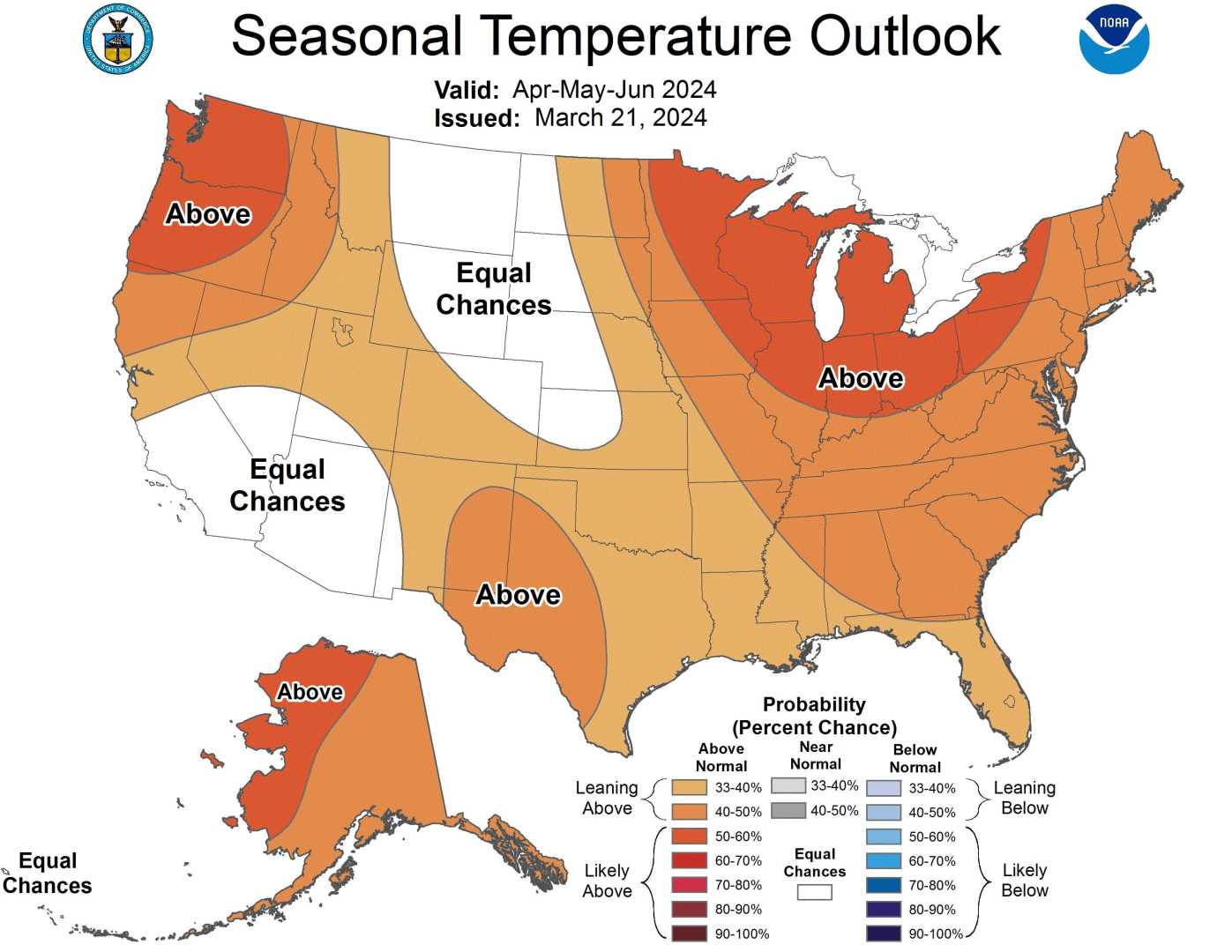News
NOAA Predicts Warmer Spring for East Coast, Cooler Northwest

SILVER SPRING, Md. — The National Oceanic and Atmospheric Administration (NOAA) released its updated seasonal climate outlook Thursday, forecasting a warmer-than-normal spring for much of the eastern United States, while the Pacific Northwest braces for cooler temperatures and increased precipitation.
According to the outlook, which covers February through April, the East Coast, including New England, has a 40-50% chance of experiencing above-average temperatures. Southern states, from Texas to Florida, face an even higher likelihood, with a 50-60% probability of warmer conditions. Meanwhile, the Pacific Northwest, including Washington state, northern Idaho, and northern Montana, has a 40-50% chance of below-normal temperatures during the same period.
“The patterns we’re seeing are consistent with broader climate trends,” said John Smith, a meteorologist with NOAA’s Climate Prediction Center. “Warmer conditions in the East are being driven by a combination of atmospheric circulation patterns and long-term warming trends.”
On the precipitation front, the outlook predicts drier-than-normal conditions for the southern U.S. and parts of the Rocky Mountains. New Mexico has a 50-60% chance of below-average rainfall, while southern Colorado faces a 40-50% likelihood. In contrast, the Pacific Northwest and parts of the Midwest are expected to see above-normal precipitation, with Washington state having a 40-50% chance of wetter conditions.
“This split in precipitation patterns is typical of La Niña influences,” Smith added. “The Northwest tends to see more moisture, while the South remains drier.”
The outlook also highlights potential impacts on agriculture, water resources, and wildfire risks. Farmers in the South may face challenges with water availability, while the Pacific Northwest could see delays in planting due to wetter conditions. Fire-prone areas in the Southwest may experience an earlier start to wildfire season if dry conditions persist.
NOAA’s seasonal outlooks are based on a combination of climate models, historical data, and current atmospheric conditions. The agency updates its forecasts monthly, providing critical information for industries, governments, and communities to prepare for upcoming weather patterns.












